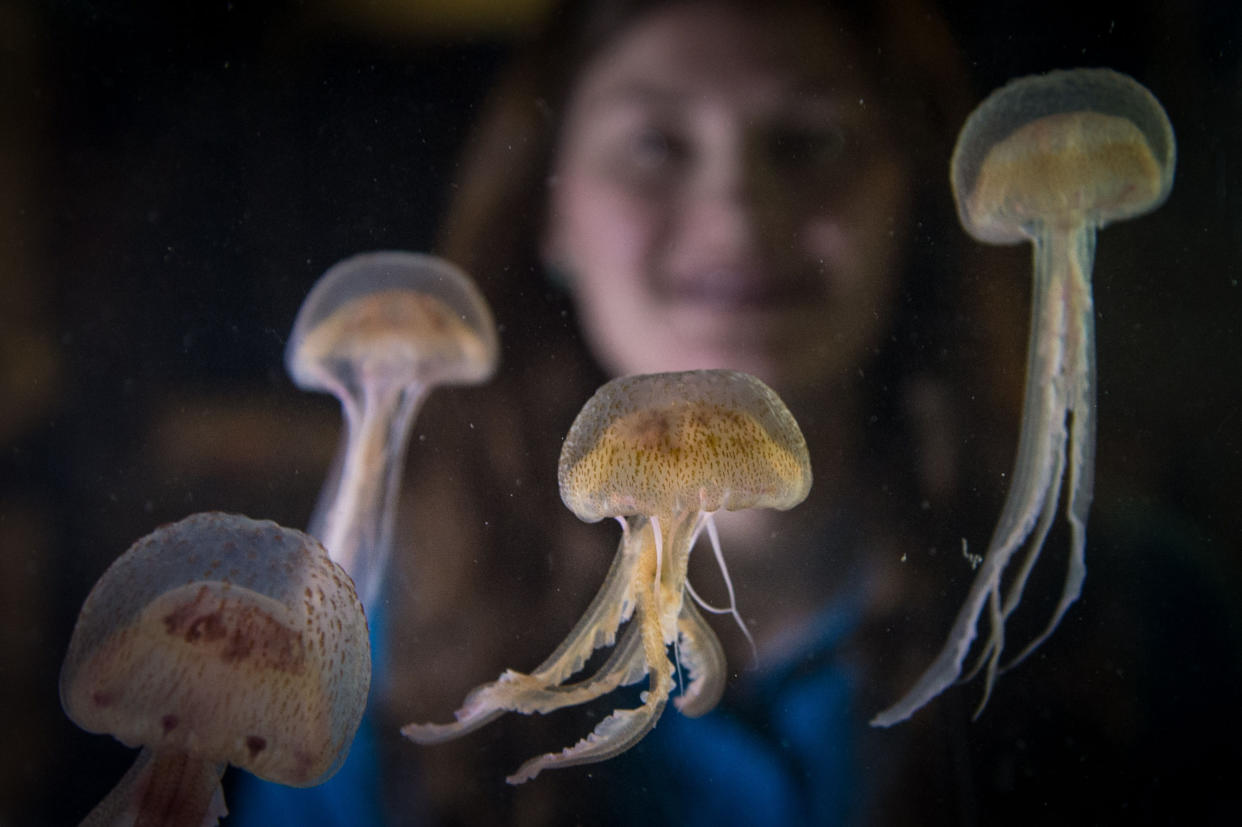Plummeting temperatures could cause an invasion of jellyfish on UK coastlines

Plummeting temperatures caused by Storm Emma and the ‘beast from the east’ could lead to a dramatic rise in the number of jellyfish on UK coastlines.
An expert has warned that the current extreme weather could cause something of a jellyfish invasion.n could be under way in months to come.
Jonny Rudd, curator at the National Sea Life Centre Birmingham, says ‘intense winter conditions’ could provide the perfect environment for blooms of jellyfish to arrive on our shores.
’It’s likely an extreme summer could follow. Scientists are concerned the crazy current conditions are a prelude to more extreme and less predictable weather. This is where jellyfish thrive.’
He added: ‘Just last week researchers from Newcastle University published a paper reporting on how floods, droughts and heatwaves are all set to become more common in Britain and the rest of Europe.

‘Jellyfish flourish in conditions created by global warming, pollution and overfishing, as evidenced by their invasions onto UK coastlines as recently as last year.
‘Jellies are superbly adapted to plug the gaps when other species decline, which is one reason why there have been such huge swarms of jellyfish appearing in recent years.
‘BEAST FROM THE EAST’: UK BATTLES SUB-ZERO WEATHER – LATEST FROM YAHOO
Record number of rough sleeper alerts sent to specialist helpline as Britain freezes
Watch: Cat shows off ninja-like skills as it dodges snowballs
Network Rail apologies for closing train lines for snow which didn’t actually materialise
Snow days: Can you be docked pay or sacked for a no-show at work?
‘Some scientists believe that jellyfish are even poised to take over the oceans one day.’
Last year so many giant jellyfish washed up on beaches in Cornwall and Wales that beachgoers were advised not to touch any of them as even a dead one can sting.
Jonny is curator for a selection of jellyfish which are to star in a brand new permanent exhibition at the National Sea Life Centre, opening this Easter.
Months in the making, the new ‘Jelly Invaders’ exhibit will star five different jellyfish species from across the world, from the bizarre freshwater ‘upside down jellyfish’ to the glittering ‘sea nettle’ variety from the Indo-Pacific.
Jonny added: ‘The new exhibit will really be lifting the lid on this mysterious species. Jellyfish are actually older than dinosaurs, as it’s believed they first swam in our oceans some 500 million years ago. With more than 350 different species, there’s a lot to uncover.’
Despite their name, jellyfish aren’t actually a type of fish and are instead classed in a group of their own, due to them being unlike any other creature on earth.
‘But jellies get a bad press,’ explains Jonny. ‘Most are completely harmless to humans; it’s only a few such as the sea nettle jellyfish that give them a bad name as they can cause a painful sting.’
Jelly Invaders opens at the National Sea Life Centre from Saturday 24th March and is included with all entry tickets. Guests can delve deeper into the jellyfish life cycle including the aquarium’s breeding programme on a Behind the Scenes Tour (additional charge of GBP3.50 applies).
The Merlin Entertainments-owned attraction is home to more than 2,000 aquatic inhabitants in over 60 immersive displays, including the UK’s only 360 tropical ocean tunnel.

 Yahoo News
Yahoo News 


